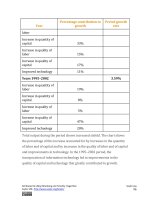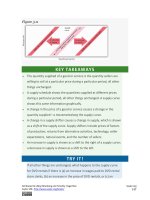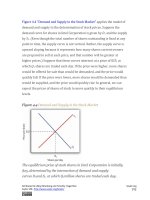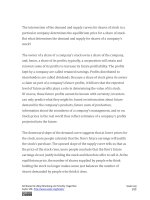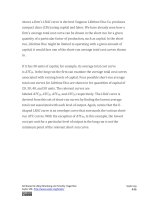Authors libby rittenberg 793
Bạn đang xem bản rút gọn của tài liệu. Xem và tải ngay bản đầy đủ của tài liệu tại đây (354.35 KB, 1 trang )
Figure 15.3 Correcting Market Failure
In each panel, the potential gain from government intervention to
correct market failure is shown by the deadweight loss avoided, as
given by the shaded triangle. In Panel (a), we assume that a private
market produces Qm units of a public good. The efficient level, Qe, is
defined by the intersection of the demand curve D1 for the public good
and the supply curve S1. Panel (b) shows that if the production of a
good generates an external cost, the supply curve S1 reflects only the
private cost of the good. The market will produce Qm units of the good
at price P1. If the public sector finds a way to confront producers with
the social cost of their production, then the supply curve shifts to S2,
and production falls to the efficient level Qe. Notice that this
intervention results in a higher price, P2, which confronts consumers
with the real cost of producing the good. Panel (c) shows the case of a
good that generates external benefits. Purchasers of the good base their
choices on the private benefit, and the market demand curve is D1. The
market quantity isQm. This is less than the efficient quantity, Qe, which
can be achieved if the activity that generates external benefits is
subsidized. That would shift the market demand curve to D2, which
Attributed to Libby Rittenberg and Timothy Tregarthen
Saylor URL: />
Saylor.org
793
